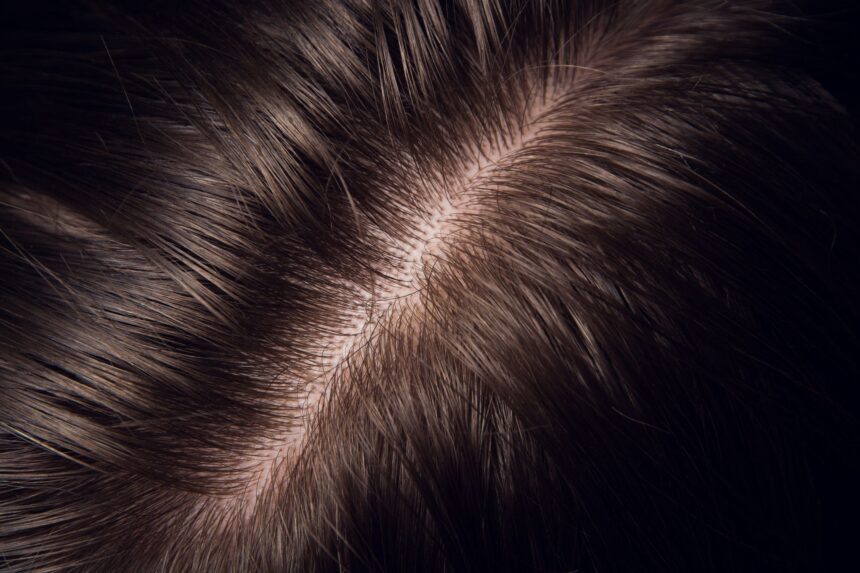Maintaining a healthy scalp is crucial for overall hair health. Unfortunately, several scalp conditions can lead to hair loss, which can be distressing and impact self-esteem. Understanding these conditions can help in early identification and treatment.
This article explores common scalp conditions that can contribute to hair loss and discusses hair transplant as a potential solution.
Seborrheic Dermatitis
Seborrheic dermatitis is a chronic inflammatory skin condition affecting areas with a high concentration of sebaceous glands, like the scalp. It is characterized by red, flaky skin and persistent dandruff. The exact cause is unknown, but it is believed to involve an overgrowth of yeast and an inflammatory response.
While seborrheic dermatitis itself doesn’t cause hair loss, the inflammation and scratching can weaken hair follicles, leading to temporary hair shedding. Managing this condition involves using medicated shampoos containing ketoconazole or zinc pyrithione and sometimes topical steroids or antifungals.
Scalp Psoriasis
Psoriasis is an autoimmune disease that causes rapid skin cell production, leading to thick, scaly patches. Scalp psoriasis can be particularly bothersome, causing itching and discomfort.
The thick scales can pull on the hair, causing it to break and fall out. Additionally, the inflammation associated with psoriasis can damage hair follicles. Treatments typically include topical corticosteroids, vitamin D analogues, and light therapy.
Folliculitis
Folliculitis is the inflammation of hair follicles, often caused by bacterial or fungal infections. It can appear as small, red bumps or pustules around hair follicles, leading to discomfort and itchiness.
Severe or recurrent folliculitis can destroy hair follicles, leading to permanent hair loss. Treatment involves antibiotics or antifungal medications and proper scalp hygiene to prevent future outbreaks.
Alopecia Areata
Alopecia areata is an autoimmune disorder where the immune system attacks hair follicles, causing hair to fall out in small, round patches. This condition can progress to alopecia totalis (total scalp hair loss) or alopecia universalis (total body hair loss).
This condition can lead to significant hair loss, often in unpredictable patterns. While there’s no cure, treatments like corticosteroid injections, topical immunotherapy, and minoxidil can promote hair regrowth.
Tinea Capitis
Tinea capitis, also known as scalp ringworm, is a fungal infection that affects the scalp and hair shafts. It is highly contagious and often seen in children.
The infection can cause hair to break off at the scalp, leading to bald patches. Treatment involves antifungal medications, both oral and topical, and maintaining scalp hygiene to prevent spread.
Lichen Planopilaris
Lichen planopilaris is a rare inflammatory condition that affects hair follicles, leading to scarring and permanent hair loss. It is part of a group of disorders known as cicatricial alopecia.
The inflammation destroys hair follicles, resulting in irreversible hair loss. Early treatment with anti-inflammatory medications, like corticosteroids and immunosuppressants, can help slow progression.
Traction Alopecia
Traction alopecia is hair loss caused by prolonged tension or pulling on the hair, often due to tight hairstyles such as ponytails, braids, or extensions.
Continuous strain on hair follicles can lead to permanent damage and hair loss. The best prevention is to avoid tight hairstyles and give the hair follicles time to recover.
Addressing Hair Loss
For individuals experiencing significant hair loss from these scalp conditions, hair transplant surgery can be a viable solution. Hair transplants involve taking hair follicles from a donor area (usually the back of the head) and transplanting them to the balding or thinning areas. One of the most popular techniques is Follicular Unit Extraction (FUE).
In FUT, a strip of scalp is removed from the donor area, and individual follicular units are extracted and transplanted to the recipient area. This method can transplant a large number of grafts in one session but leaves a linear scar.
Benefits of FUE:
Minimal Scarring: One of the most significant advantages of FUE is the minimal scarring it leaves behind. Unlike FUT, which leaves a linear scar, FUE results in tiny, dot-like scars that are hardly noticeable, even with short haircuts. This is especially beneficial for those who prefer short hairstyles or have a tendency to develop keloids or hypertrophic scars.
Faster Recovery Time: Patients undergoing FUE typically experience a quicker recovery time. Since the procedure is less invasive, there is less postoperative discomfort and swelling. Most individuals can return to their normal activities within a few days, and the donor area heals rapidly.
Flexibility in Hair Harvesting: FUE allows for the extraction of hair follicles from various parts of the body, not just the scalp. This is particularly useful for individuals with insufficient donor hair on the scalp, as follicles can be harvested from areas like the chest or beard.
Natural-Looking Results: FUE provides natural-looking results due to the precision in harvesting and transplanting individual follicles. The direction, angle, and distribution of transplanted hair can be meticulously controlled, ensuring a seamless blend with existing hair.
Various scalp conditions can lead to hair loss, ranging from inflammatory disorders to infections and autoimmune diseases. Early diagnosis and treatment are crucial in managing these conditions and preventing permanent hair loss. For those experiencing significant hair loss, transplant surgery offers a promising solution to restore hair and confidence. Consulting with a dermatologist or hair loss specialist can provide personalized treatment options tailored to individual needs.






